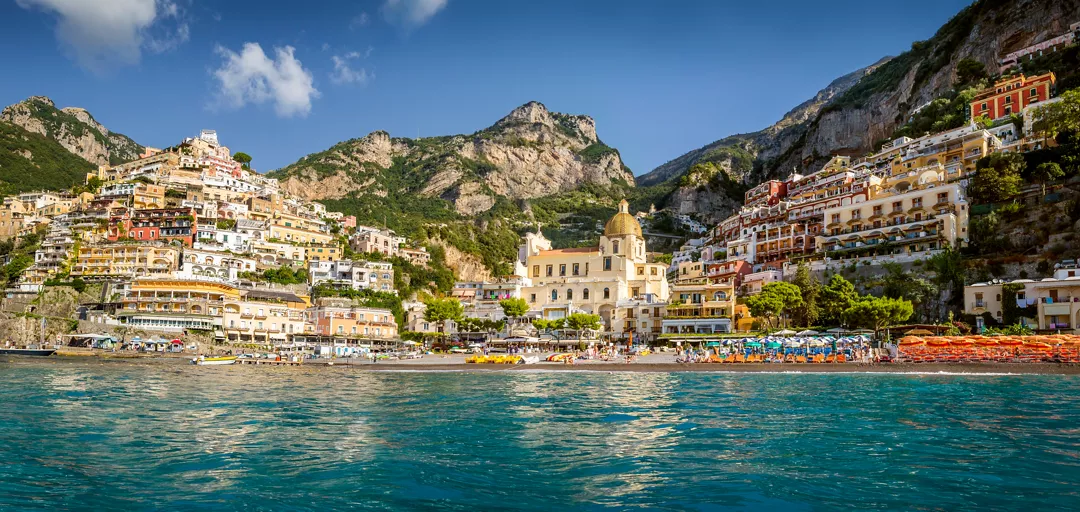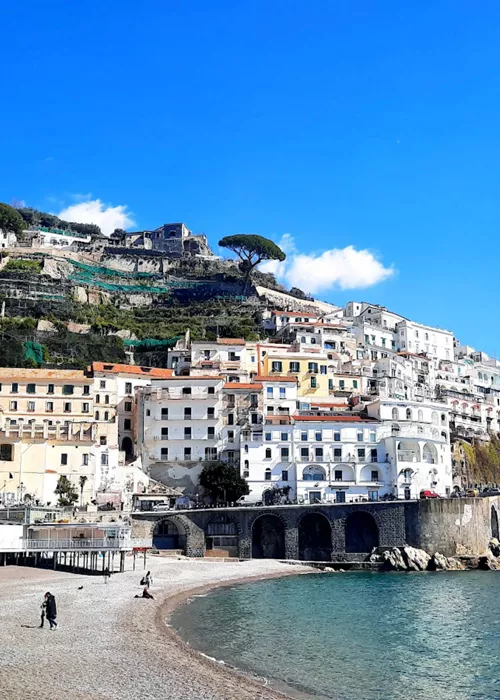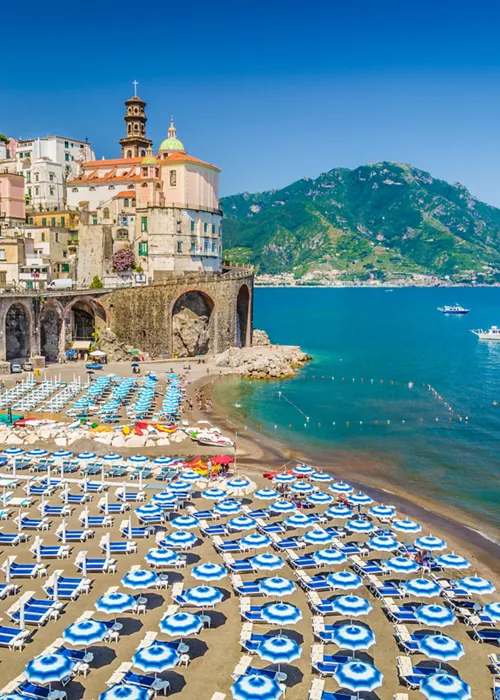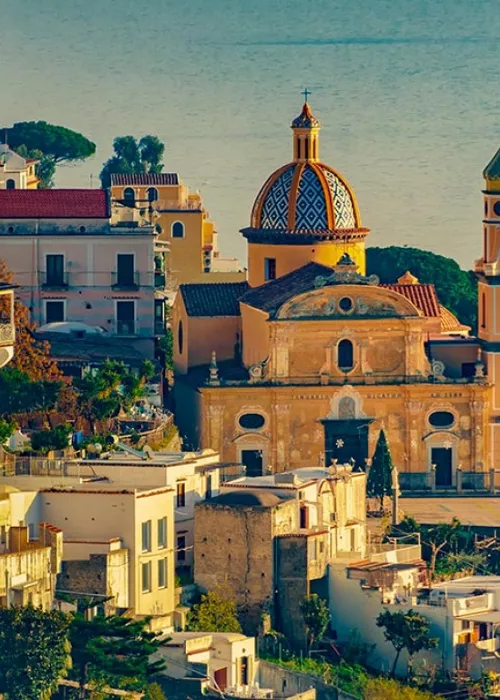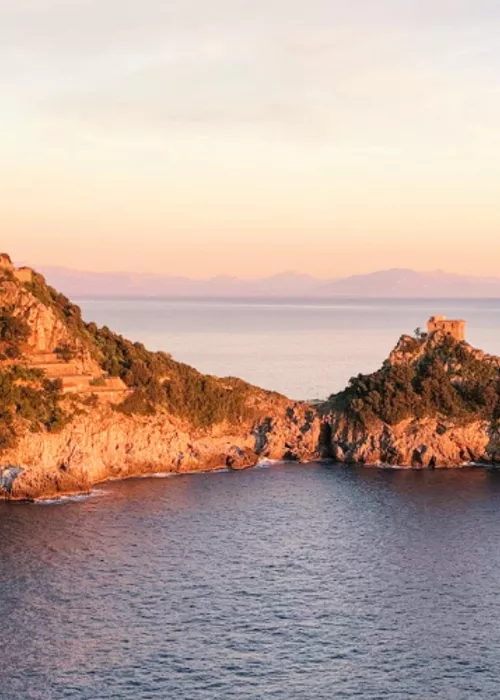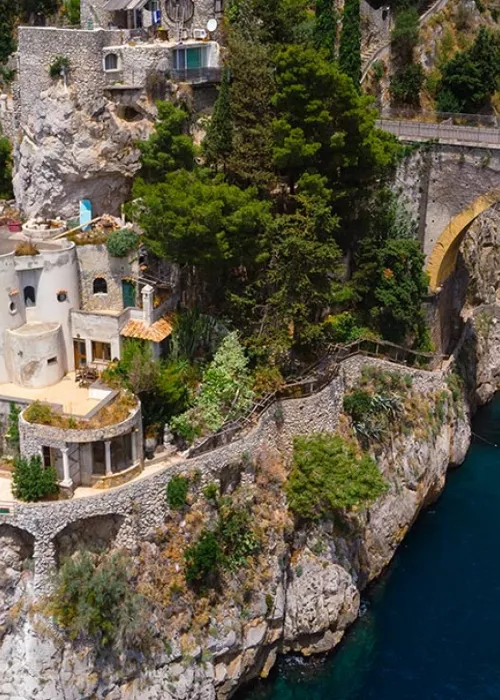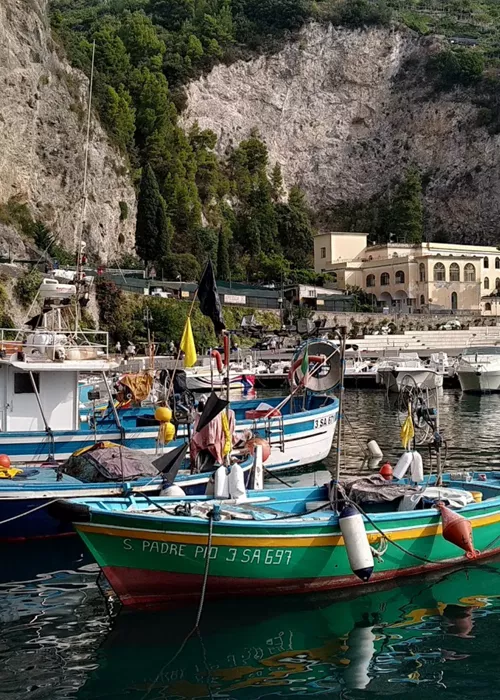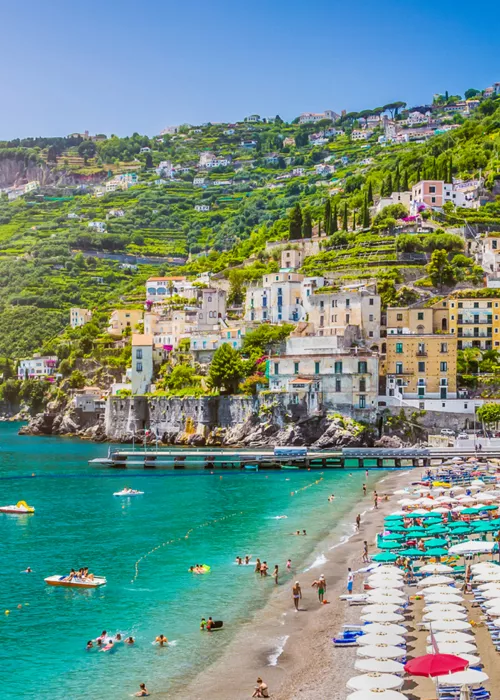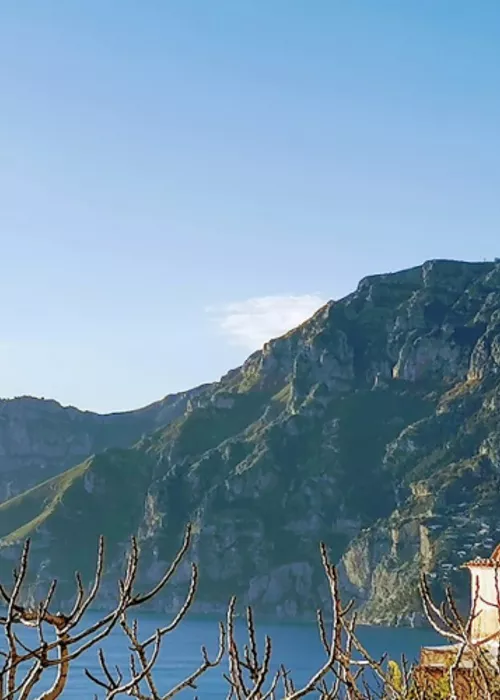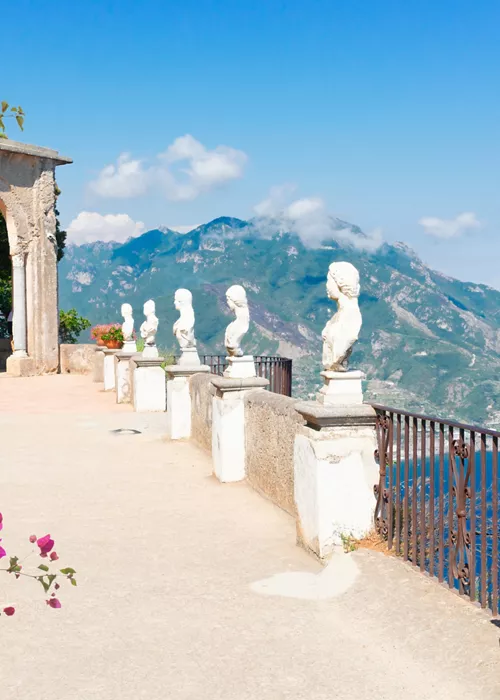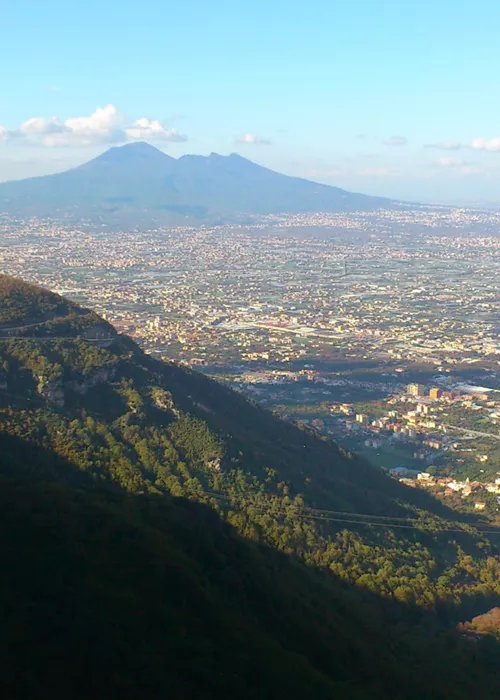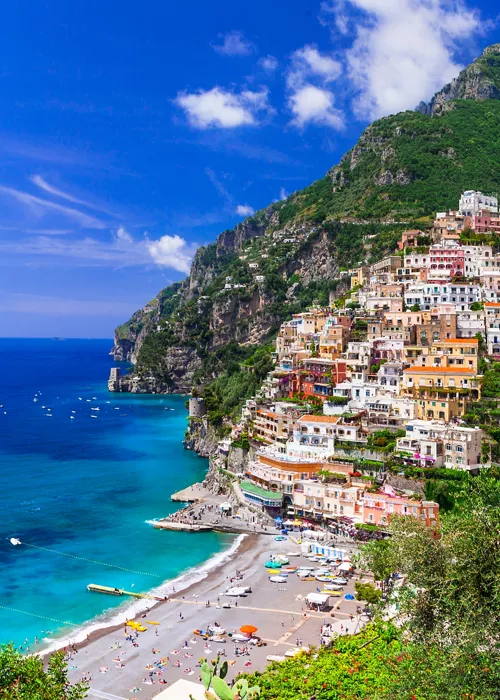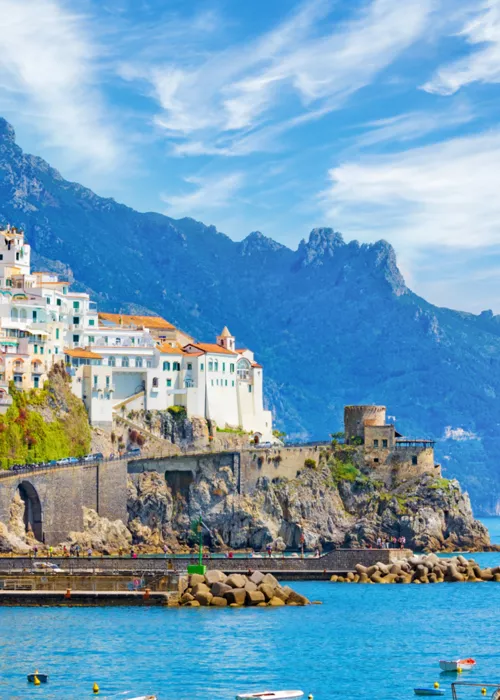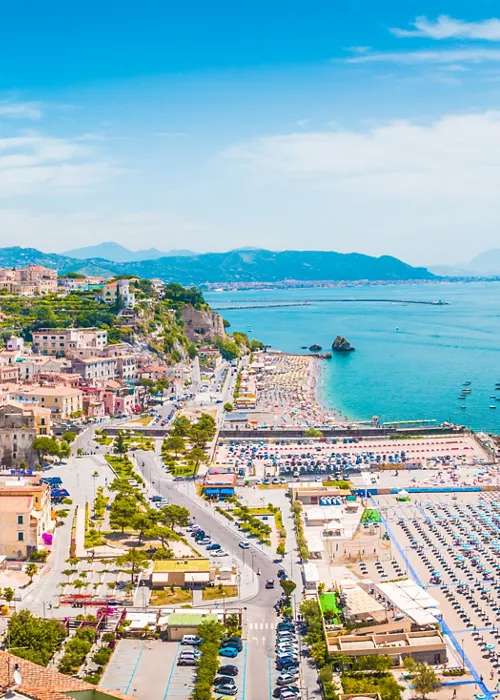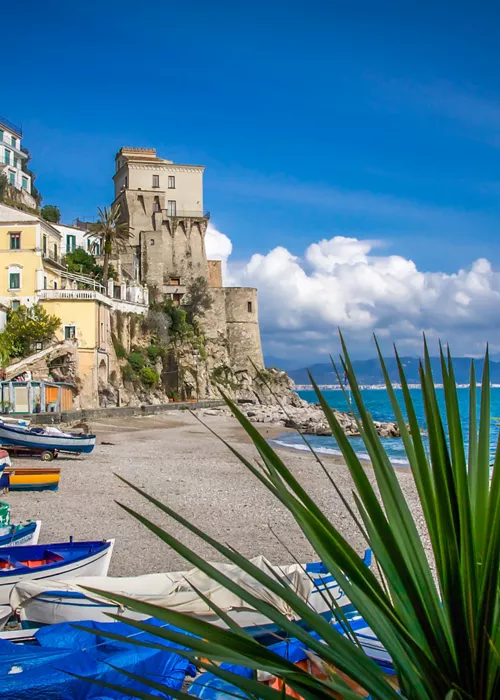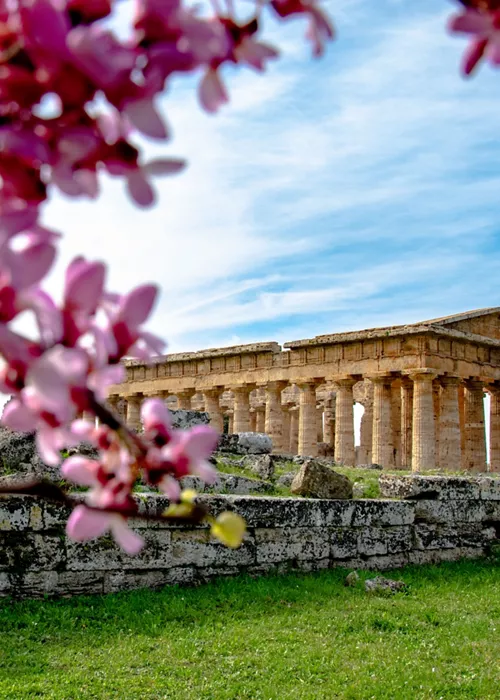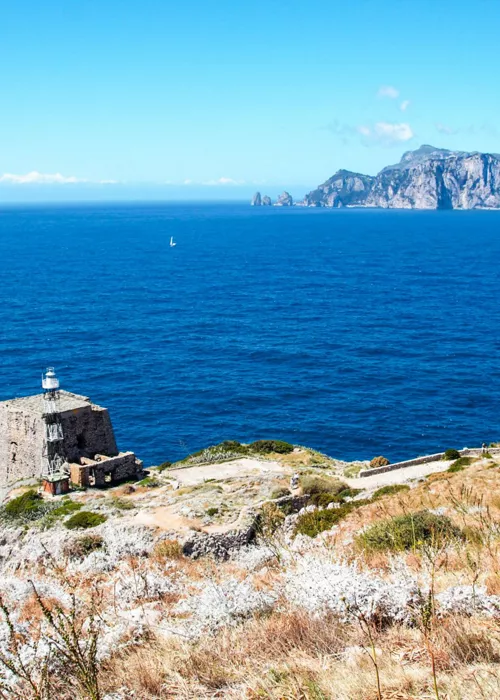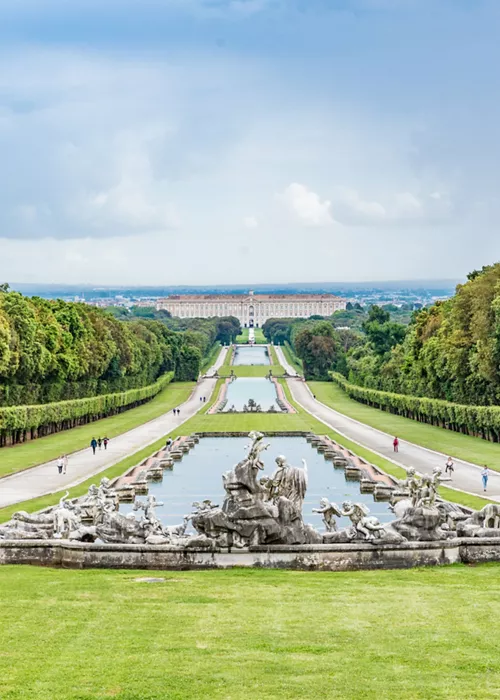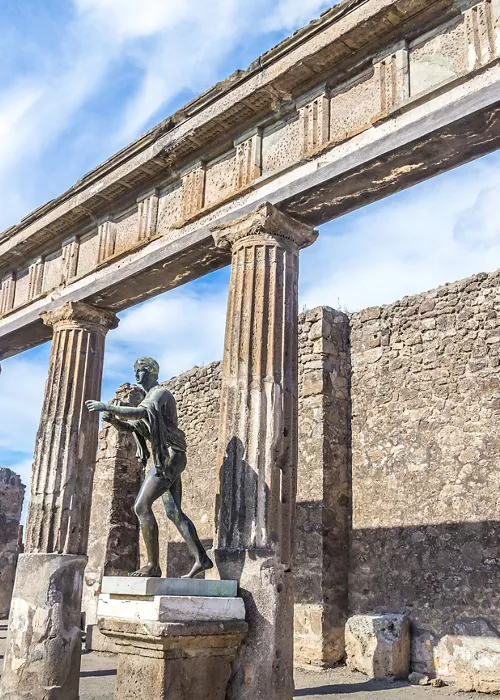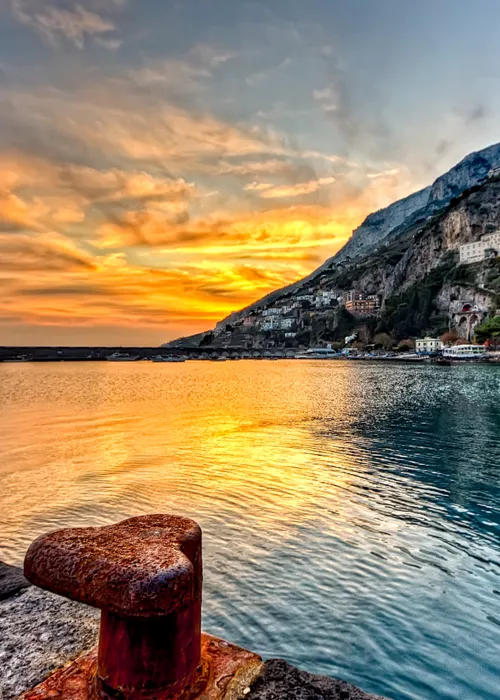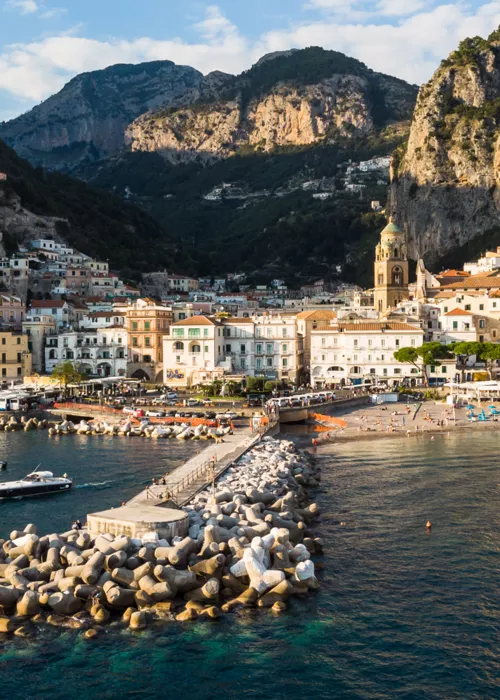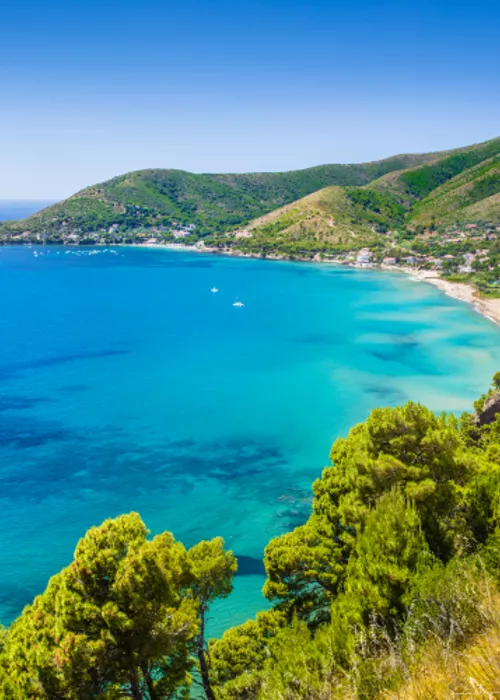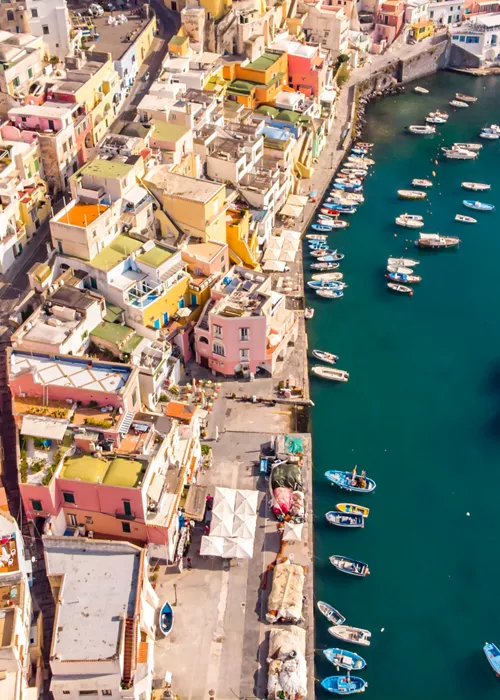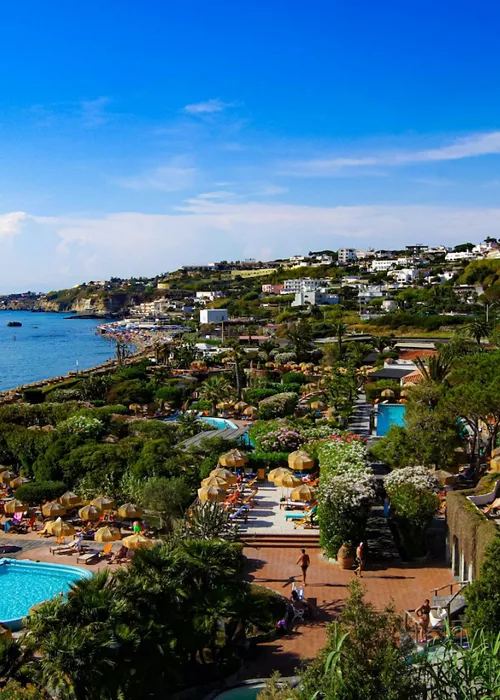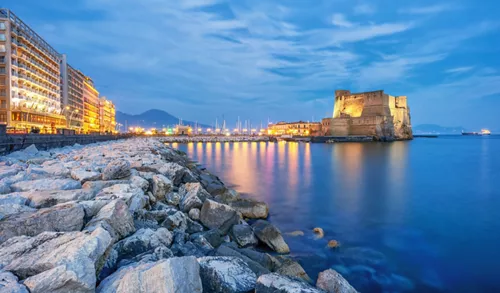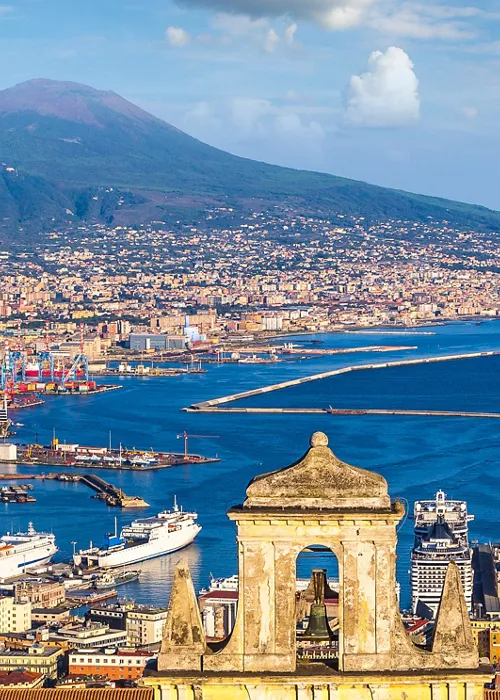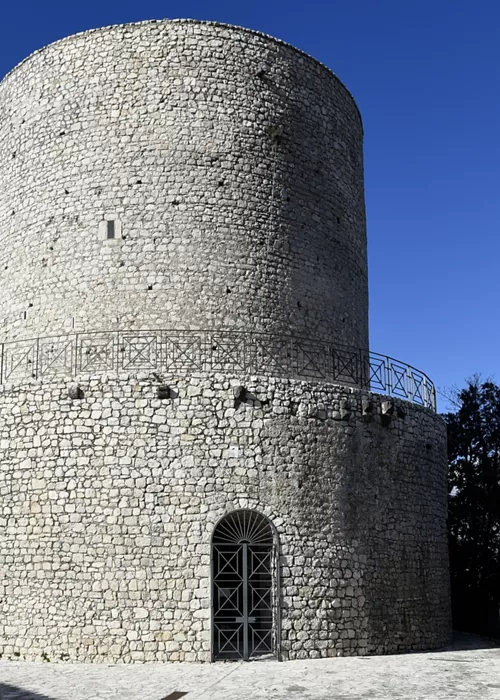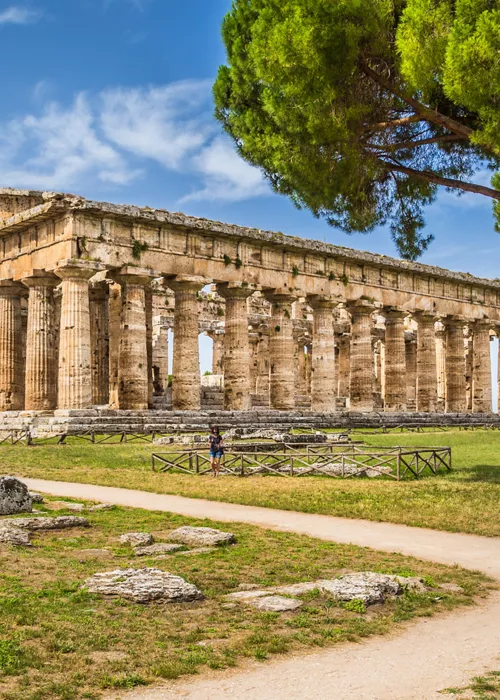The Amalfi Coast: a hypnotic view of the cobalt blue sea
4 minutes
One of the most visited areas of Campania in the world, this stretch of coastline reaching from Positano to Vietri sul Mare along the Tyrrhenian coast of southern Italy. In front is the Gulf of Salerno, behind it the Monti Lattari.
Its high cliffs, enchanting coves and small bays, terraces dotted with citrus fruits, vines and olive trees, and its high-fashion shops and artisan workshops make it one of the most popular destinations in the world.
Included in the UNESCO World Heritage List as a perfect example of a Mediterranean landscape with a scenery of great cultural and natural value, it is composed not only of internationally famous locations such as Amalfi and Positano, but also of small villages with an ancient atmosphere.
What is the Amalfi Coast and where is it located?
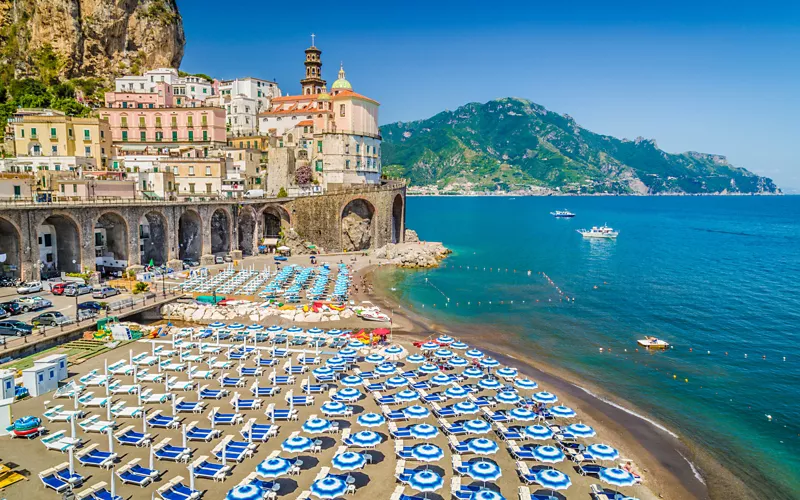
Extensive and fascinating, the Amalfi Coast is located between the Gulf of Naples and the Gulf of Salerno and includes 16 beautiful municipalities in the province of Salerno: Amalfi, Atrani, Cava de' Tirreni, Cetara, Conca dei Marini, e la sua Grotta dello Smeraldo, Furore, Maiori, Minori, Praiano, Positano, Raito, Ravello, Sant'Egidio del Monte Albino, Scala, Tramonti e Vietri sul Mare.
The Amalfi Coast beaches are among the most beautiful in the Tyrrhenian Sea and in the world, although not very extensive due to the conformation of the coast, which is so impervious as to leave small (but marvellous) pebble cuttings between the cliffs.
Equally popular, the Amalfi Coast caves are an unmissable attraction for anyone wanting to descend into fascinating natural caverns.
History and information on the Amalfi Coast
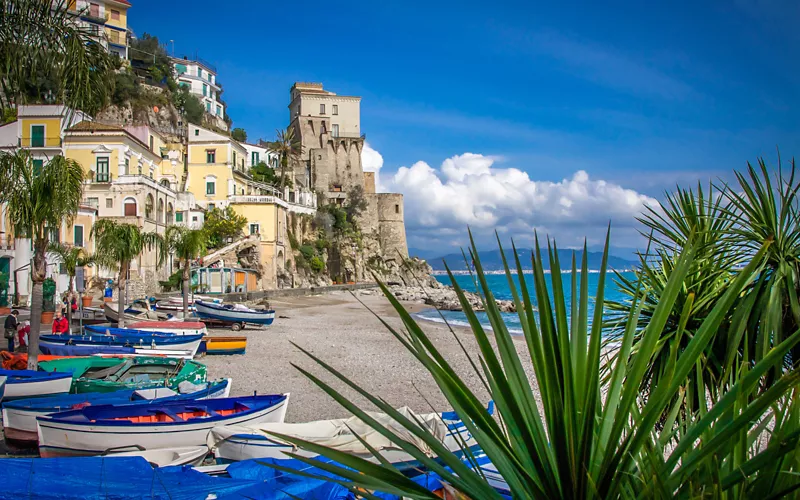
Formerly part of the Roman Empire, as evidenced by the numerous patrician villas, the inhabitants of the then Amalfi Coast during the Greek-Gothic War allied themselves with the Byzantines, who granted them greater autonomy from the Empire. Amalfi was later conquered by the Longobard principality of Salerno, but soon rejoined the Byzantine Empire acquiring administrative autonomy.
The Maritime Republic of Amalfi was the oldest of the four Maritime Republics and later became a Duchy in the 10th century. The Amalfi dukedom experienced its greatest expansion between the late 10th and early 11th century, at the time of Duke Manson I. Conquered by the Normans in 1136, the Coast fell into poverty.
Amalfi then became the capital of the district of the same name, in the Kingdom of the Two Sicilies, and was annexed to the Kingdom of Italy in 1861.
Why is the Amalfi Coast a UNESCO site
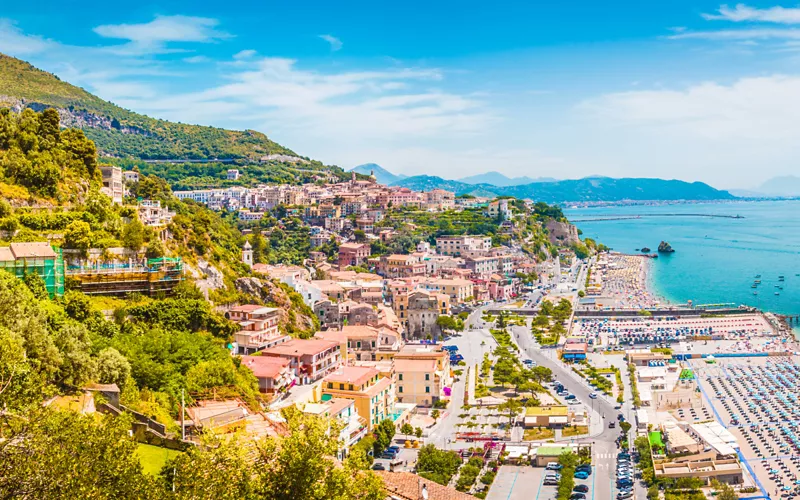
The Amalfi Coast, along the coast east of the Sorrento Peninsula, became a UNESCO World Heritage Site in 1997.
The motivations behind its protection are clear: it is an extraordinary cultural landscape of exceptional value achieved through the respectful relationship between man and nature. Its characteristic topography and historical evolution have allowed it to preserve a nature that is both unspoilt and harmoniously blended with human activities.
The Mediterranean landscape is characterised by typical macchia, forests and rocky areas, and precious citrus trees and vineyards. The Amalfi Coast villages are delightful nativity scenes suspended over the sea.
The most beautiful places to visit on the Amalfi Coast: six unmissable stops
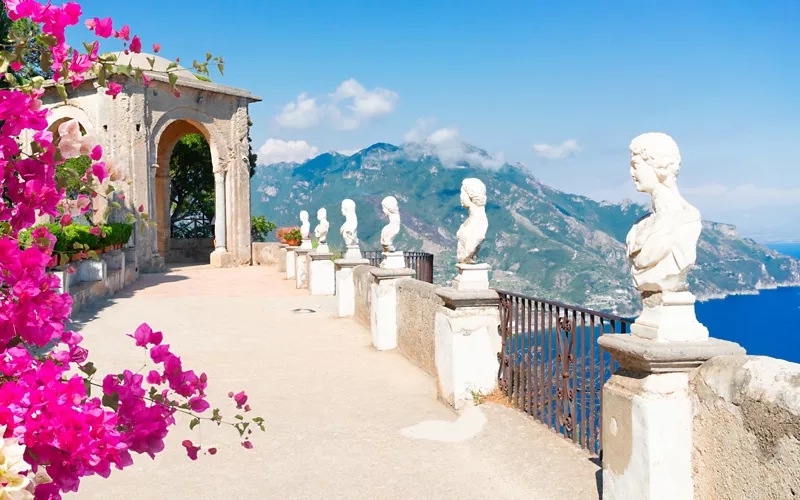
Six key stops, starting with Positano, colourful houses, churches, flights of steps, narrow streets and tiled roofs framing the town overlooking the sea.
The second, must-see stop is Amalfi, the town that has long held a monopoly on trade in the Tyrrhenian Sea and eastern markets. Its town planning seems to have an oriental influence, with its houses clinging to steep slopes, among labyrinths of alleys and stairways. The Amalfi Cathedral is an almost obligatory stop.
A trip to the 'first pearl of the Amalfi Coast', Vietri sul Mare, is a feast for the eyes: alleys, shops, colourful houses, almost as captivating as its traditional ceramic work. We continue on to Cetara, a fishing village that seems suspended in time.
Villa Cimbrone in Ravello, dating back to the 11th century, is also worth a visit. The villa itself is a private hotel, but it is possible to admire the immense gardens that, thanks to the Terrazza dell'Infinito, have the most beautiful view of the Amalfi Coast.
Ideal for hiking and trekking, the Path of the Gods is a nine-kilometre long nature trail on the Amalfi Coast. It starts in Agerola and ends in Positano.
Typical products of the Amalfi Coast: 5 delicacies to taste
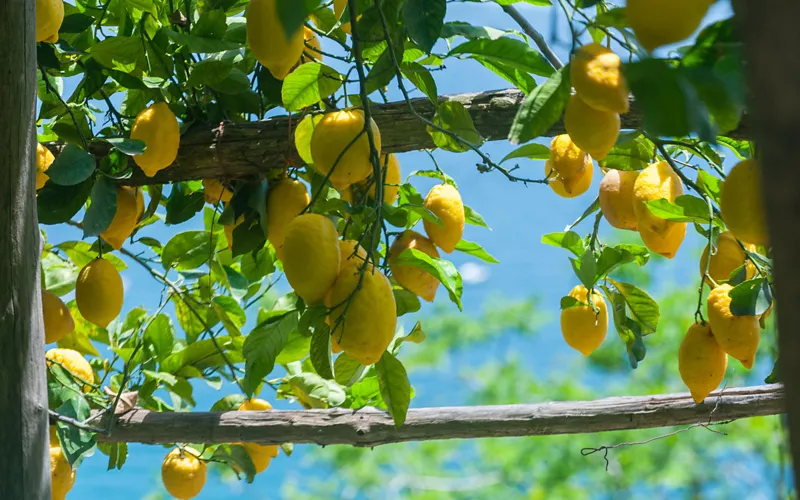
The food and wine tradition of the Amalfi Coast is based on typical products of the land, obtained thanks to its optimal climate, the influence of the sea and the characteristic terracing created by man.
Among the must-try products are Amalfi lemons, citrus fruits with Protected Geographical Indication called Sfusati because of their elongated, tapered shape.
The wine of the Amalfi coast is very popular: the area produces a full-bodied and fresh white, a tannic and intense red and a delicate rosé.
True connoisseurs will fall in love with Cetara’s colatura di alici, an amber-coloured liquid condiment with an intense salty flavour used to season spaghetti. Obtained by macerating several layers of anchovies, alternating with other fish, salt and flavourings.
Traditional dishes also include 'ndunderi, large gnocchi made of semolina and ricotta cheese that are said to date back to Roman times.

